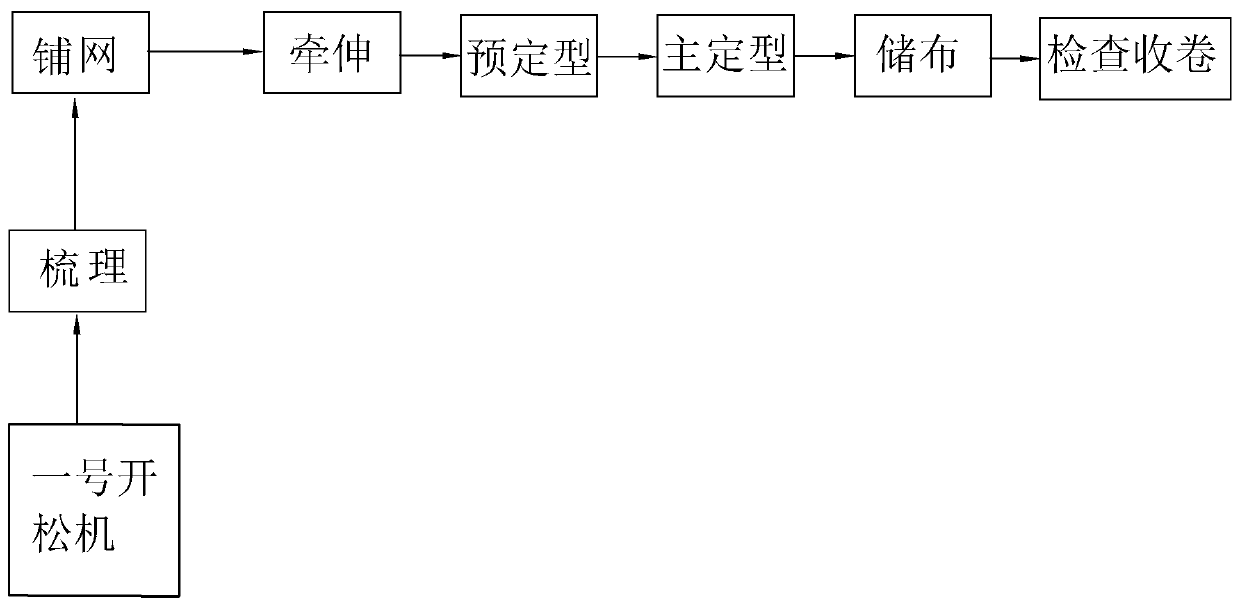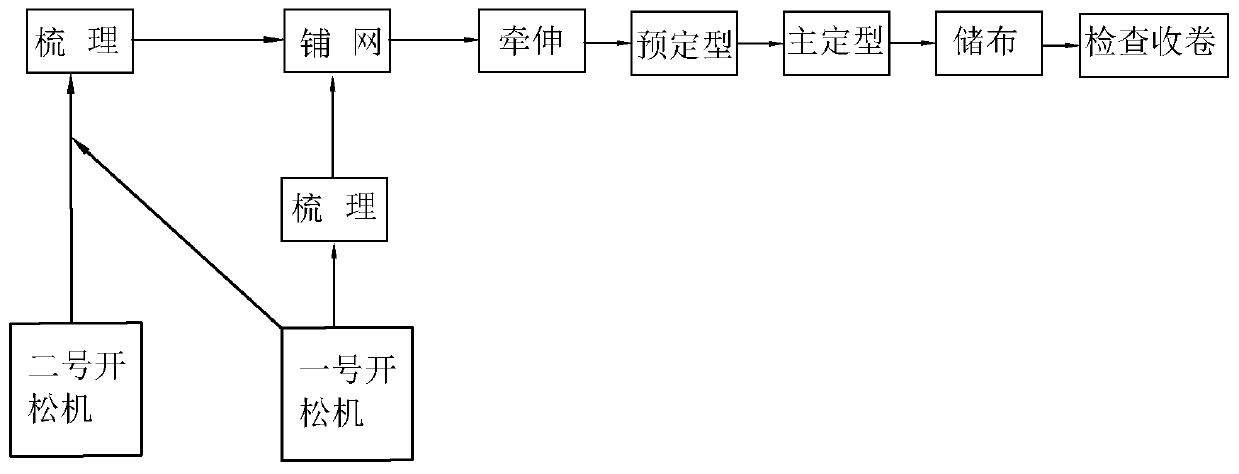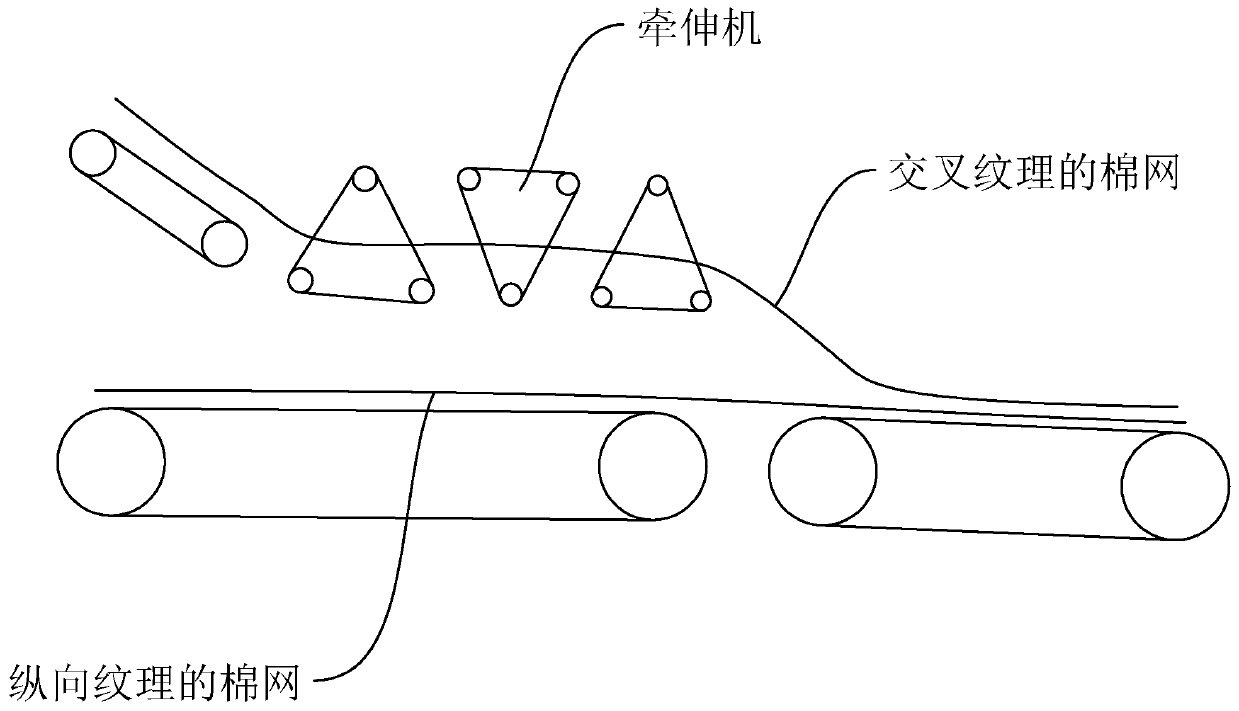A light and high-strength non-woven fabric production process
A production process, non-woven technology, applied in non-woven fabrics, textiles and papermaking, etc., can solve the problems of reducing strength, unsightly, non-combustible, etc., to achieve uniform bearing capacity, improve aesthetics, and improve the effect of hand feeling
- Summary
- Abstract
- Description
- Claims
- Application Information
AI Technical Summary
Problems solved by technology
Method used
Image
Examples
Embodiment 2
[0050] Embodiment 2: The difference from Embodiment 1 is that in step S1, PET / PET is selected, and the temperature of the hot rolling mill in step S5 is 110°C, which can produce a fabric with a hard hand, light and high strength, which is suitable for passing super Sonic stitching, and since the melting point of PET is 110°C, the temperature of the hot rolling mill is controlled at 110°C to ensure that PET / PER can be melted and bonded during hot rolling.
Embodiment 3
[0051] Embodiment three: the difference with embodiment one is: select PET / PP in step S1, wherein PET weight ratio is 70%-90%, PP weight ratio is 10%-30%, the temperature of hot rolling mill is 150°C, choose PET / PP composite material for mixed laying, and the PP weight accounts for 10%-30%, the produced fabric is PET on one side and PP on the other side. When making a packaging bag, the material is One side of the PP is in contact with each other, and heat sealing can be achieved through a sealing machine, and the heat-sealed packaging bag has a firm structure and is not easy to damage. The melting point of PP is 150°C, so when the cloth enters the hot rolling machine at 150°C, PP melts and the other The fibers are bonded into sheets.
Embodiment 4
[0052] Embodiment four: the difference with embodiment one is: select PET / PERPE in the step S1, wherein the weight ratio of PET is 70%-90%, the weight ratio of PETPE is 10%-30%, the hot rolling mill The temperature is 130°C, PETPE has a skin-core structure, the outer layer is PE with a lower melting point, and the inner layer is PET with a higher melting point, so that the melted PE can be used as an adhesive to bond and connect the fibers; the melting point of PE When the cotton web enters the hot rolling mill at 130°C, PE melts and acts as a binder to bond the fibers into a sheet of fabric without adding other binders, thereby realizing the lightweight of the fabric and making the fabric Thinner.
PUM
 Login to View More
Login to View More Abstract
Description
Claims
Application Information
 Login to View More
Login to View More - R&D
- Intellectual Property
- Life Sciences
- Materials
- Tech Scout
- Unparalleled Data Quality
- Higher Quality Content
- 60% Fewer Hallucinations
Browse by: Latest US Patents, China's latest patents, Technical Efficacy Thesaurus, Application Domain, Technology Topic, Popular Technical Reports.
© 2025 PatSnap. All rights reserved.Legal|Privacy policy|Modern Slavery Act Transparency Statement|Sitemap|About US| Contact US: help@patsnap.com



